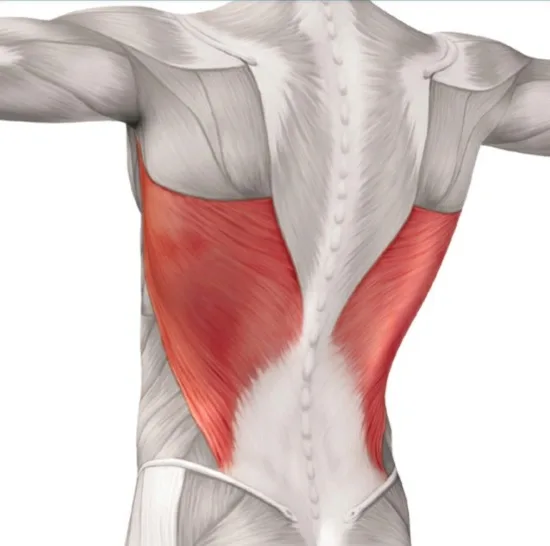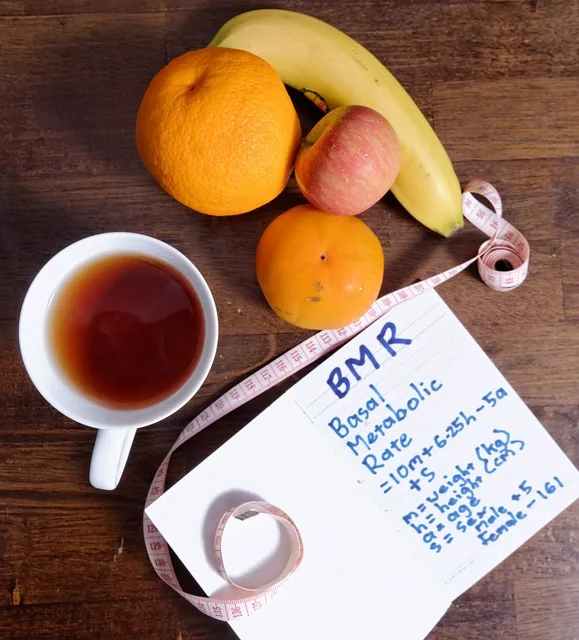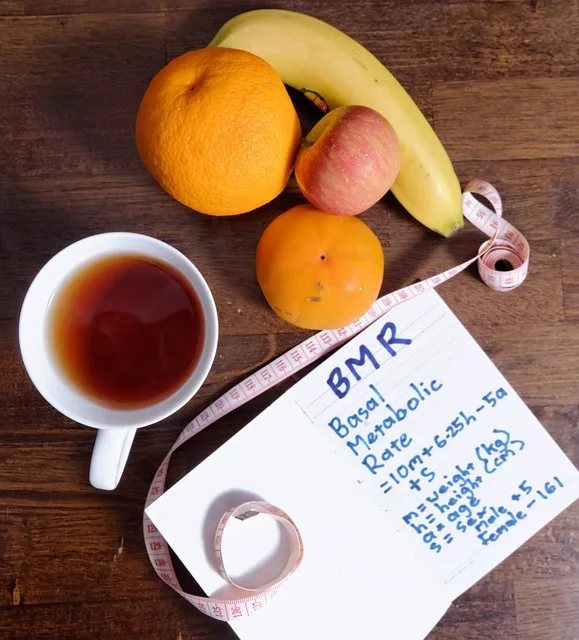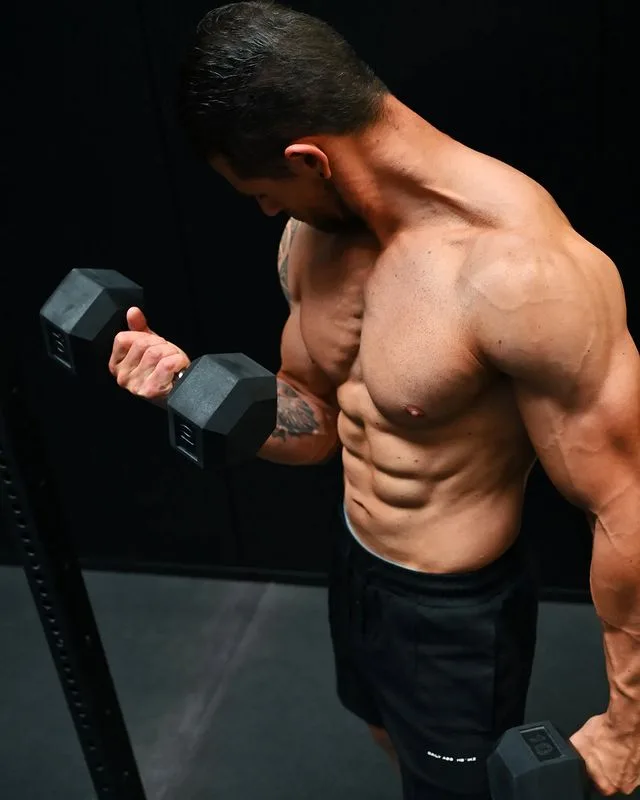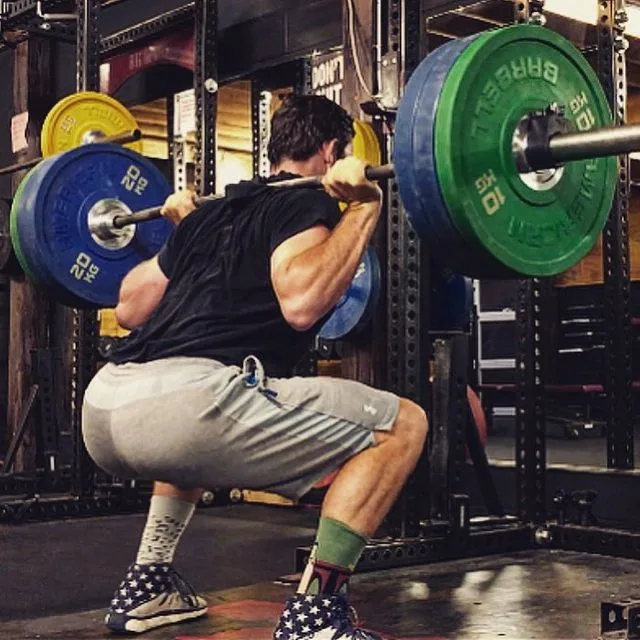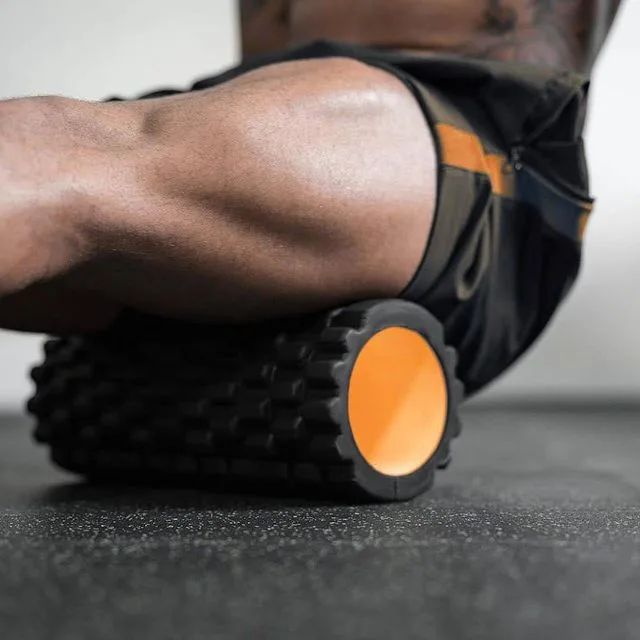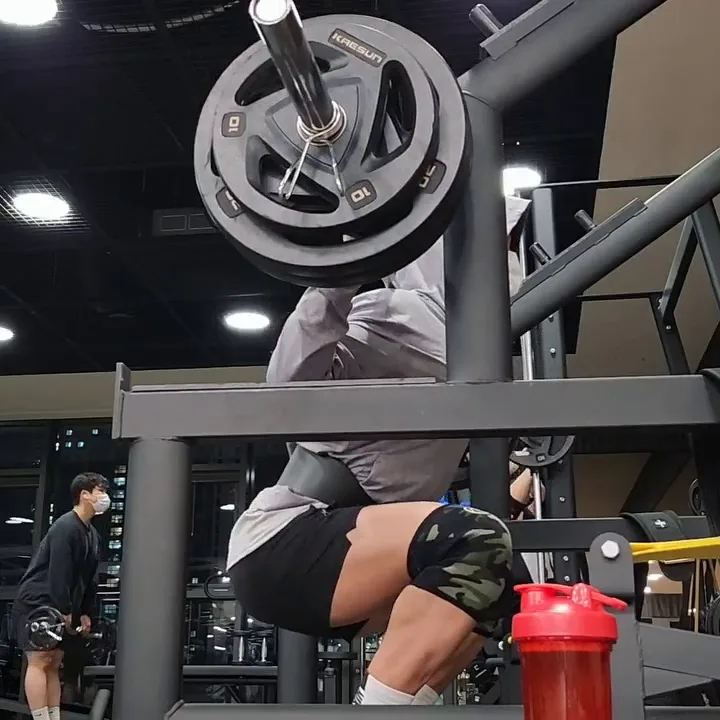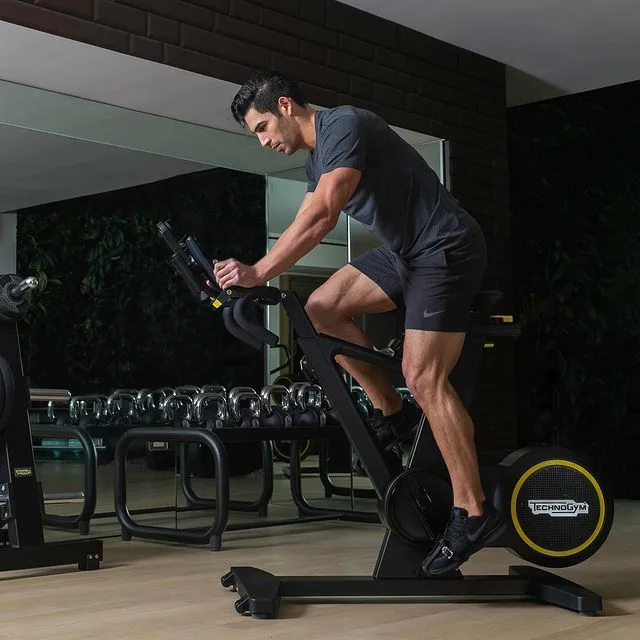The latissimus dorsi, also known as the lats, is the largest muscle (up to 20-40 cm) in the back.
A dynamic muscle that is often underestimated in strength training, it is an important muscle responsible for a variety of upper body movements.
Latissimus Dorsi Muscles and Actions
It is located in the middle back. The lats arise along the seventh thoracic vertebra (T7) of your spine and extend to your humerus. The latissimus dorsi muscle also covers the tip of the shoulder blade (scapula). When the skin is removed, it is superficial and clearly visible.
It helps protect and stabilize the spine while providing your shoulder and back strength.
The muscles also help with shoulder and arm movement and support good posture. Strengthening and stretching the latissimus dorsi is essential for building your upper body strength, improving range of motion, and preventing injury.
Muscle functional activity
They are a climbing muscle and the primary function of the muscle is that of the upper extremity, but it is also considered a respiratory accessory muscle. 1
Along with the levator scapula, trapezius, and rhomboid muscles, the latissimus dorsi belongs to the superficial layer of the outer back muscles.
Functionally, the lats muscle is related to the muscles of the scapular motion. This muscle is able to pull the inferior angle of the scapula in different directions, creating motion at the shoulder joint; Internal rotation, addition, and extension of the hand. 2
In addition, it is an auxiliary respiratory muscle, as well as one of the main stabilizers of the spine during its various movements.
Research has also demonstrated that the latissimus dorsi is activated during deep inspiration and with vigorous respiratory actions such as coughing and sneezing. 1
In activities such as walking with crutches, where the humerus becomes the fixed point when standing, the lats has the ability to pull the trunk forward relative to the arms. Along with this action, the pelvis also has to be raised.
In people with paralysis of the lower half of the body, the fact that the lats attaches to the pelvis and the fact that it is still innervated enables the individual to produce movement of the pelvis and trunk. As a result, people wearing calipers and using crutches can achieve a modified gait by alternate contraction of each latissimus dorsi, fixing the arms and holding the hips. 3
Actions
This muscle work together with the teres major and pectoralis major to perform upper extremity movements. Together, these muscles will work on the glenohumeral joint to engage the arm, rotate the medial, and extend the arm.
The lats, along with the sternal head of the teres major and pectoralis major, are also active in the extension of the humerus.
Extension and addition will be strongest when the motion is initiated by a partial flexion or abduction, or a combination of the two motions.
The muscle is also activated in moving the trunk forward and upward when the upper extremities are fixed upward, such as climbing or performing an activity such as a chin-up.
Lats Training Tips
This muscle is capable of a variety of movements. Any training program should reflect this diversity.
Straight-arm movements like dumbbell pullovers are great for isolating the lat, while multijoint movements like rows are great for lifting heavy weights.
Avoid a tall (shoulders forward) position when performing exercises for this muscle.
It’s easy to overuse the biceps when doing certain exercises, so try to focus on pulling from the latissimus dorsi and squeezing the muscles at the top of the movement.
While doing the pull down, keep the torso straight and pull the bar down on the torso as much as possible. Pretend that you are pulling the bar towards the belt, not towards the chest. Many times’ people lean back while doing this movement. Don’t fret—you’re only working the glutes, not the lats.
It’s not about gaining weight, it’s about working the muscles, so make sure you don’t swing. As you swing backward, you’re using momentum to help propel the weight. The other problem with the back squat is its tendency to pull the bar up to the chest, which then engages more of your posterior deltoid, resulting in less isolation on the latissimus dorsi.
In simple words, one function of the latissimus dorsi is to help in pulling the arms down. To get a good view of the plane of motion is to imagine a jumping jack.
Keeping this in mind, pay attention to the path of the elbows, not the hands. A mental trick is to imagine the hands and forearms simply as hooks that hold the bar in place. As the bar goes up, the elbows are going to move away from the body, and as the bar comes down, they move toward the body. The lower you pull the bar, the closer the elbows will be to the sides. The greater the range of motion, the greater the activity of the muscles, the greater the development of the muscles.
When doing a row, make sure to keep the elbows close to the body to get proper arm extension. If you bring the elbows out, you’re going to engage the rear deltoid more. As in a pull down, bring the bar to the belt, not the chest. Be careful using the reverse grip, as it allows the biceps to assist with movement, while paying less attention to the latissimus dorsi.
Another great lat exercise is the bar row or dumbbell row, and this tip applies to both: In addition to pulling the arms out to the sides, the lats also pull the arms down and back.
A good way to visualize the movement: Using both hands to slide off the trunk of the car. It certainly over-simplifies the motion, but it should give you a picture, and emphasize why you shouldn’t lean backwards to complete heavy reps as well.
- August 11, 2021. Anatomy, Back, Latissimus Dorsi. Susan H. Jeno; Matthew Varacallo.[↩][↩]
- Latissimus dorsi muscle. Author: Molly Smith DipCNM, mBANT. Reviewer: Jana Vasković MD. Last reviewed: February 22, 2022.[↩]
- Roger Soames, Nigel Palastanga, Field D. Anatomy and Human Movement: Structure and Function. 7th Edition—August 22, 2018. Edinburgh. Butterworth Heinemann. Elsevier.[↩]


